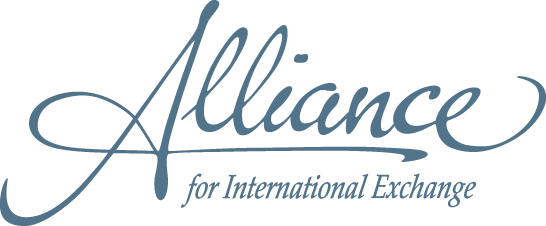By Mark Overmann
We expected it, but it’s still deeply disappointing to see. The President’s FY26 budget proposal would essentially eliminate State Department international exchange programs.
Released earlier today, this FY26 “skinny” budget proposes to cut State Department international exchange programs by $691 million, or by 93%. This would decimate and essentially eliminate the Bureau of Educational and Cultural Affairs (ECA). Given the current budget is $741 million, this would leave only $50 million for all ECA programs and operations.
The proposal demonstrates a fundamental misunderstanding of exchange programs and would do the exact opposite of making America safer, stronger, and more prosperous.
International exchange programs are a proven investment in America – an investment in our economy, in our people, and in our foreign policy influence and interests. In order to expand America’s global influence, it’s important to invest more in international exchanges, not less.
We should pause for a minute at this stage and remember that this President’s budget request (PBR) is a proposal – a “wish list” so to speak – and is not binding. Congress can take it, take portions of it, or take none of it. More often than not, Congress goes against the PBR during their appropriations process. The previous Trump Administration proposed to cut ECA for four consecutive years, anywhere from 55-75%. These proposals were all rejected by Congress. Check out my colleague Adrienne’s Jacobs’ excellent blog post on this topic for more.
But even so, we should be and are very concerned about this proposal, and we will push back. We’ll be working, as we always do, to make clear that exchange programs are a direct investment in our economy, our communities, and our people. Exchange programs may be international in nature, but they’re distinctly American in impact.
The budget request’s rationale for this proposed cut – that exchanges are inefficient and can’t be afforded, that opportunities are being taken away from Americans, and that there is “fraud” in their implementation – couldn’t be further from the truth.
Exchange programs are one of the best returns on investment in the federal government
According to the State Department’s own talking points, 90%, or ~$660 million, of the Department of State exchange program budget is spent on Americans traveling abroad or by international participants while in America. This is one of the best returns on investment across the entire federal government.
Additionally, the exchanges appropriation leverages millions of additional dollars in private and international government contributions. For example:
- The Global Ties U.S. network of 90+ community-based nonprofits in all 50 states that implement the International Visitor Leadership Program (IVLP) sees an 11:1 return on federal investment – for every federal dollar spent on their programs conducted in the United States, these organizations generate $11 more.
- The Fulbright Program is one of the most highly leveraged federal programs, as over 100 partner governments currently contribute over $100 million annually, with 30 foreign governments matching or exceeding the U.S. government’s annual contribution.
Exchange programs create opportunities for Americans and American communities.
International exchanges equip American leaders for success on the world stage and strengthen American communities across the country.
- 15,000 American participants travel abroad on State Department exchanges every year, gaining critical skills and experiences that set them up for success in the global marketplace.
- Nearly 60% of the young Americans that receive a Benjamin A. Gilman International Scholarship to study abroad are from small towns or rural communities in the U.S.
- 97% of U.S. Scholars who participated in the Fulbright Program found the experience professionally transformative.
- The National Security and Language Initiative for Youth (NSLI-Y) and the Critical Language Scholarship (CLS) provide young Americans the opportunity to study languages critical to U.S. interest directly in the regions where these languages are spoken.
- Four out of five Americans who participate in the International Visitor Leadership Program (IVLP) feel international exchange programs enhance the image of their community as a good place to live.
- 31 million job openings require skills in communication, leadership, and problem-solving – all skills gained through exchange programs.
- All 50 states host and benefit from exchange participants contributions to American businesses, communities, schools, and more.
Exchange programs are some of the most monitored and evaluated programs in the government.
U.S. organizations that implement State Department exchange programs are strong and scrupulous partners who exhibit consistent quality and accountability.
- Implementing partners of the Department of State must submit line-item budgets for every award, including notes that justify each expense. These budgets are critiqued by ECA’s grants officers who often follow up with questions to ensure the allowability of expenses and cost reasonableness. Funds cannot be distributed until grants officers sign off.
- Financial reports are submitted by implementing partners to ECA on a regular basis (monthly or quarterly depending on the terms of their contract with the Department of State). This is done so ECA can monitor program spending in real time.
- Every implementing partner who receives funds from ECA must be audited by an external firm annually to ensure there is no waste, fraud, or abuse. Each audit report is shared with the Department of State.
- The last Inspector General report on ECA was done in 2021 and, contrary to the budget proposal’s allegation, no fraud of any kind was reported.
